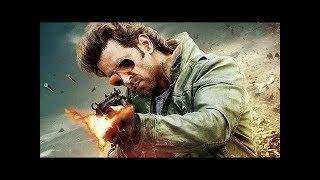Tabun, sarin, phosgene and mustard gas are chemical warfare agents invented to kill. They were carelessly disposed of after Germany lost two world wars. Still buried or underwater in many places, they have become a public-health time bomb.
According to weapons disposal experts, there are at least 200 places in Germany where chemical warfare agents are stored. They were carelessly buried or sunk, and are now a ticking time-bomb. In the 100 years since the end of the First World War, policymakers have largely sought to keep this deadly legacy out of sight, because dealing with it would cost billions. But experts agree that if we do not tackle the problem now, it will become increasingly dangerous and will continue to plague future generations.
During World War One and World War Two, Germany was one of the world's largest producers of chemical weapons. Substances like tabun, sarin, phosgene, diphenylchloroarsine and mustard gas were produced in huge quantities. The goal was to kill or demoralize the enemy in exceptionally cruel ways. After the wars, the chemical agents as well as factories and distribution facilities were supposed to have been destroyed as quickly as possible. In many places, the chaotic aftermath of war meant that disposal was often not recorded in writing or documented with photographs.
One of the most unsettling places is Dethlinger Pond near Münster on the Lüneburg Heath. Experts say it may be the "most poisonous hole in the world." After World War Two, British occupying forces as well as German authorities indiscriminately threw in whatever they found near the local chemical weapons factory and other stockpiles. The amount of chemical weapons there is still unknown, but it’s certain to be in the thousands. Almost nothing was documented, and later, the pond was simply filled in. Seventy-five years after the end of the World War Two, authorities have finally gathered the courage and determination to take action, partly due to pressure from protesters. As the pond is excavated under strict security measures, it soon becomes clear that the situation is far worse than feared.
Dethlinger Pond is just one of many locations in Germany that still harbor these dark, toxic and often dangerous secrets. The chemical warfare industry was widespread throughout the country. Whoever believes that these places are all guarded or protected by authorities is mistaken. Often, buildings were simply constructed on top of contaminated areas, something that seems unthinkable today.
#documentary #Germany
[This documentary is a reupload.]
ـــــ
DW Documentary gives you knowledge beyond the headlines. Watch top documentaries from German broadcasters and international production companies. Meet intriguing people, travel to distant lands, get a look behind the complexities of daily life and build a deeper understanding of current affairs and global events. Subscribe and explore the world around you with DW Documentary.
Subscribe to:
DW Documentary: https://www.youtube.com/channel/UCW39zufHfsuGgpLviKh297Q?sub_confirmation=1#
DW Documental (Spanish): https://www.youtube.com/dwdocumental
DW Documentary وثائقية دي دبليو: (Arabic): https://www.youtube.com/dwdocarabia
For more visit:
http://www.dw.com/en/tv/docfilm/s-3610
Instagram:
https://www.instagram.com/dwdocumentary/
Facebook:
https://www.facebook.com/dw.stories
We kindly ask viewers to read and stick to the DW netiquette policy on our channel: https://p.dw.com/p/MF1G
According to weapons disposal experts, there are at least 200 places in Germany where chemical warfare agents are stored. They were carelessly buried or sunk, and are now a ticking time-bomb. In the 100 years since the end of the First World War, policymakers have largely sought to keep this deadly legacy out of sight, because dealing with it would cost billions. But experts agree that if we do not tackle the problem now, it will become increasingly dangerous and will continue to plague future generations.
During World War One and World War Two, Germany was one of the world's largest producers of chemical weapons. Substances like tabun, sarin, phosgene, diphenylchloroarsine and mustard gas were produced in huge quantities. The goal was to kill or demoralize the enemy in exceptionally cruel ways. After the wars, the chemical agents as well as factories and distribution facilities were supposed to have been destroyed as quickly as possible. In many places, the chaotic aftermath of war meant that disposal was often not recorded in writing or documented with photographs.
One of the most unsettling places is Dethlinger Pond near Münster on the Lüneburg Heath. Experts say it may be the "most poisonous hole in the world." After World War Two, British occupying forces as well as German authorities indiscriminately threw in whatever they found near the local chemical weapons factory and other stockpiles. The amount of chemical weapons there is still unknown, but it’s certain to be in the thousands. Almost nothing was documented, and later, the pond was simply filled in. Seventy-five years after the end of the World War Two, authorities have finally gathered the courage and determination to take action, partly due to pressure from protesters. As the pond is excavated under strict security measures, it soon becomes clear that the situation is far worse than feared.
Dethlinger Pond is just one of many locations in Germany that still harbor these dark, toxic and often dangerous secrets. The chemical warfare industry was widespread throughout the country. Whoever believes that these places are all guarded or protected by authorities is mistaken. Often, buildings were simply constructed on top of contaminated areas, something that seems unthinkable today.
#documentary #Germany
[This documentary is a reupload.]
ـــــ
DW Documentary gives you knowledge beyond the headlines. Watch top documentaries from German broadcasters and international production companies. Meet intriguing people, travel to distant lands, get a look behind the complexities of daily life and build a deeper understanding of current affairs and global events. Subscribe and explore the world around you with DW Documentary.
Subscribe to:
DW Documentary: https://www.youtube.com/channel/UCW39zufHfsuGgpLviKh297Q?sub_confirmation=1#
DW Documental (Spanish): https://www.youtube.com/dwdocumental
DW Documentary وثائقية دي دبليو: (Arabic): https://www.youtube.com/dwdocarabia
For more visit:
http://www.dw.com/en/tv/docfilm/s-3610
Instagram:
https://www.instagram.com/dwdocumentary/
Facebook:
https://www.facebook.com/dw.stories
We kindly ask viewers to read and stick to the DW netiquette policy on our channel: https://p.dw.com/p/MF1G
- Category
- Nature
Commenting disabled.











